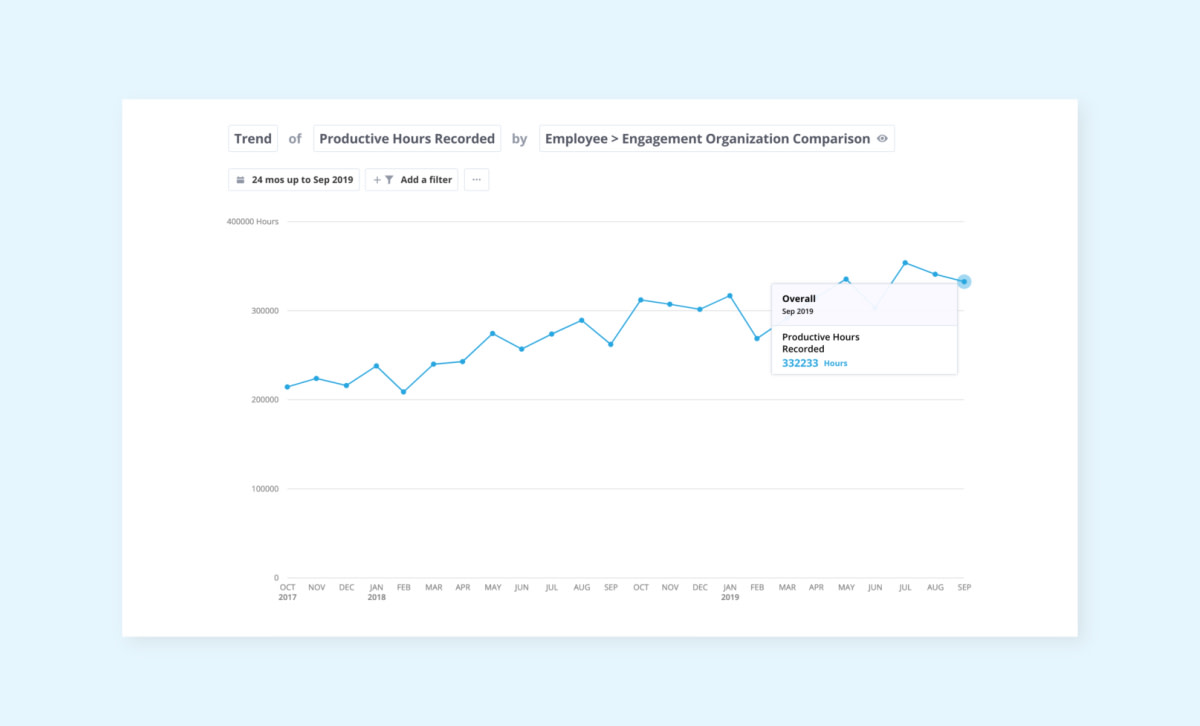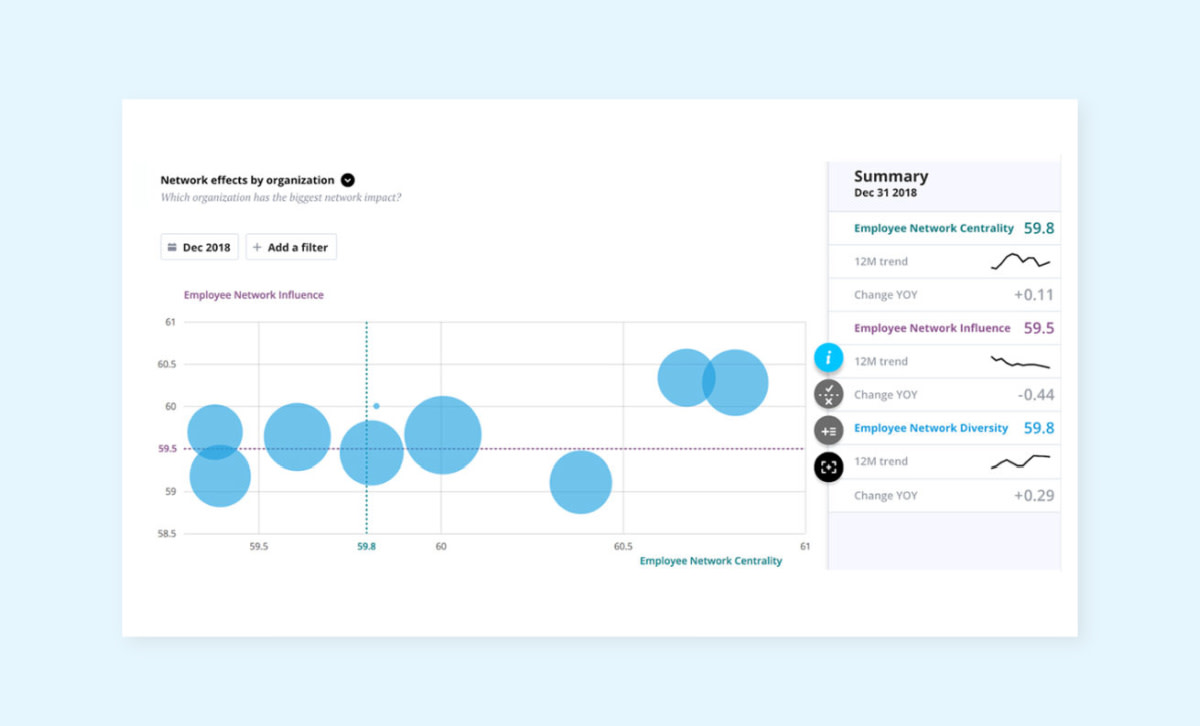The Data-Driven Way to Build Connections With Your Remote Workforce
For managers of hybrid and remote workers or teams, here are some ideas for how digital tools can strengthen connections and communications.

We’ve created an e-book to help you navigate the three stages of a crisis with the right workforce questions and data analysis. Download it here. You may also find this checklist on Key Questions to Answer During a Crisis handy. Check it out at this link. Looking for more resources to guide you through crisis management? Visit our Crisis Management Resource Center.
The COVID-19 crisis has forced the acceleration of a digital transformation. Remote work hasn’t been an option for every employee or business, but many organizations have been thrust into a massive work from home experiment to maintain business continuity.
Nearly “half of American workers are currently working from home, more than double the fraction who worked from home (at least occasionally) in 2017-18,” states a recent analysis published by the Brookings Institution.
As a result of this shift, user levels for collaboration tools like Slack and Microsoft Teams have soared. Almost overnight, cloud computing has become an essential infrastructure.
But even when the technology is there, other barriers remain: A Gartner poll found that, according to 76% of HR leaders, the top employee complaint during the coronavirus outbreak has been “concerns from managers about the productivity or engagement of their teams when remote.”
And most importantly, parts of the US are going through the most devastating week yet, leaving workers in various states of emotional turmoil. Many organizations understand that now is the time for flexibility and understanding. But this can be a challenge when managers can’t get a reading on the emotional tenor of teams in the same way they would in the office.
An engaged remote workforce: Two ways digital tools help
At this stage of the pandemic, many businesses are stabilizing and shifting work to operate in a new reality (for a full definition of the three phases of crisis management–React, Respond, and Recover–read this earlier post).
There are two main ways that digital tools and platforms can help support remote working relationships: The first is about the relationship between workers and their managers, the second is about the relationship within and between teams.
If you are involved in managing teams or supporting people decisions, here are some ideas for how digital tools can strengthen mutual understanding through open communication:
1. Creating a dynamic feedback loop between managers and employees
Employee engagement increases dramatically when employees have positive relationships with their managers, and employee engagement drives productivity. A key component of this is continuous, two-way dialogue: managers must be able to both share and receive information from their teams.

Visual showing the trend of productive hours recorded to employee engagement results. Fictional data used for illustrative purposes.
Manager-to-Employee communication
Modern performance management is based on the idea that managers need to provide regular, clear expectations about productivity goals to their teams. Managers can continue to gauge productivity using pre-existing goals or KPIs.
If a coding group previously measured productivity by watching the number of “bugs closed,” for example, then this can continue. Similarly, managers can continue to use project management tools, such as Asana, or even a simple shared spreadsheet, to ensure that everyone knows what is needed of them, and for managers to keep the team informed of progress.
Of course, expectations can’t be set in a vacuum: Otherwise resilient people are now struggling with unprecedented levels of anxiety, stress, and uncertainty. They also may be facing circumstances that are beyond their control, like managing kids in the home. So it’s important to consider these factors and adjust expectations accordingly. It’s simply not possible to expect the same output as before; patience, empathy, and open communication is the key.
Employee-to-Manager communication
Surveys are a good way to gauge employee sentiment. Qualtrics (offered for free during the pandemic) enables organizations to ask people questions related to safety, sentiment, and other areas that have a direct impact on productivity.
Of course, there will be some people who aren’t as productive merely because they can’t resist binging Netflix–but my take is that these are likely individuals who were distracted while in the office anyway. Most people are doing the best they can under the circumstances.
As you approach these conversations, consider performance history, and be prepared to make adjustments. You don’t want to lose key people right now–you will need them to keep your head above water and eventually pull you through recovery.
2. Fostering connections within and between teams
MIT scholar and serial entrepreneur Alex (Sandy) Pentland has long argued that face-to-face interaction makes teams smarter because it facilitates the right kind of idea flow. For organizations that are working almost entirely remotely, these valuable interactions just aren’t happening anymore in a spontaneous way.
This means managers and leaders will need to be more proactive about nurturing existing–and forging new–organic virtual relationships. Organizational Network Analysis (ONA) is one way to identify how information is flowing from one remote worker to another. A proper ONA study incorporates data coming from multiple sources, such as calendar, email, instant messaging, and knowledge sharing applications (while respecting important data privacy rules).
Building relationships with ONA
ONA provides a realistic view of how people really communicate and build networks–which is very different from what is depicted on the traditional org chart. This is helpful for a manager to get a sense of whether certain employees are too isolated or whether people are working as a team.
Be aware that digital streams can provide false positives and negatives. An analysis which simply counts the number of sends without considering the volume of words may under or over-state the level to which individual employee communication differs. To properly control for these, you will also need to leverage employee survey or observation data.
ONA has yet to reach the mainstream. But COVID-19 could change all of this with the explosion in tools like Slack and Microsoft Teams because it analyzes the by-product data from these collaboration platforms.

Visual showing an organizational analysis on which organization has the biggest network impact. Fictional data used for illustrative purposes.
Putting it all together
When making decisions about new policies or how to structure the way work gets done, senior leaders need to look at all of the above elements together. In isolation, each piece tells them only a fragment of the bigger picture.
When they understand the employee experience, see how work is actually getting done, and know where to adjust expectations, they get a holistic view of how best to drive employee engagement–a precursor to productivity, both in the short- and long-term. (For more details on insights to watch for in an analysis of employee engagement data, read this white paper).
If you are responsible for making people decisions at your company and are faced with a leadership team that is nervous about people staying productive at home, you can point to the many studies countering this claim. Once you get over this cultural hurdle, you can focus on what really matters right now: Getting employees not just the technology tools, but the right kind of workplace connections they need to do the best they possibly can in this new reality.
Share your experience
Share insights, ask questions, and discover the latest best practices on crisis management and employee safety using people analytics via the #AskVisier LinkedIn community


